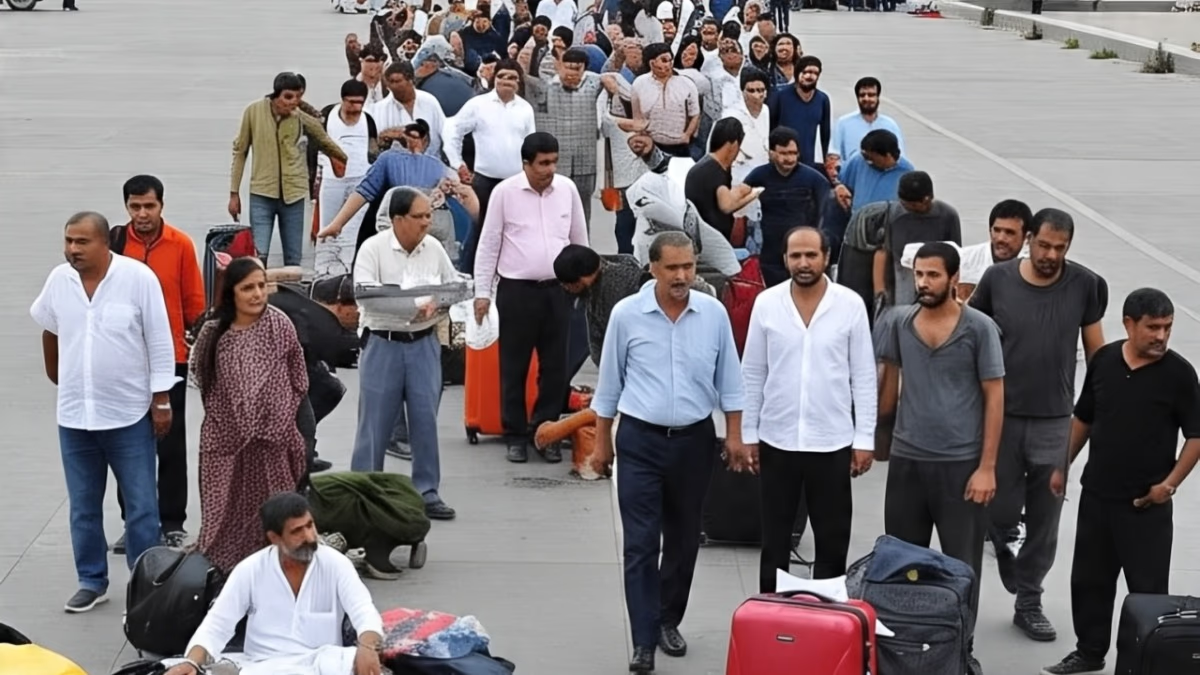In 2022, when the Russia-Ukraine war erupted, India swiftly launched Operation Ganga to safely evacuate thousands of Indians, mostly students, from Ukraine. However, conducting a similar large-scale evacuation from Iran amidst the current tensions in West Asia is not as straightforward. Geography, air restrictions, diplomatic sensitivities, and the nature of threats complicate the situation.
Approximately 10,000 Indian citizens are in Iran, including roughly 1,500-2,000 students and 6,000 long-term residents. Besides, Indian sailors and others connected to the shipping sector are also present in Iran. In contrast, nearly 22,500 Indians were successfully brought back from Ukraine between February and March 2022.
The Indian government has not yet named any evacuation operation from Iran, unlike during the Ukraine evacuation, which was called 'Operation Ganga'. Under Operation Ganga, a total of 90 flights were used for evacuations, including 14 operated by the Indian Air Force from neighboring countries. In Ukraine, India received considerable assistance from countries like Hungary, Romania, Moldova, Slovakia, and Poland, making the mission more manageable.

Source: aajtak
Challenges in Evacuating Indians from Iran
In Iran's case, there are significant geographic and diplomatic hurdles. Although the number of those seeking to return is less than in Ukraine, safe routes and alternatives are limited. Iran's eastern neighbors, Pakistan and Afghanistan, both pose diplomatic and strategic challenges for India. Pakistan has closed its airspace to India, and evacuation by land is not possible.
While there has been some improvement in India-Afghanistan relations, the logistical issues for evacuation remain severe. Air routes are not feasible because flights must pass through Pakistani airspace, which is restricted.
Contrast Between East and West
During the early days of the Russia-Ukraine conflict, Ukraine's western border was relatively secure, as fighting was concentrated in eastern areas like Donetsk, Luhansk, and Kharkiv. This made it possible for thousands, including Indians, to leave Ukraine. But this is not the case in Iran, where Israel's airstrikes are widespread and not restricted. Thus, evacuation routes are fraught with dangers.

Source: aajtak
Transport as a Major Challenge
Despite the war in Ukraine, rail and road connections largely remained intact, enabling people to reach land border crossings like Lviv and Chernivtsi. In Iran, road and rail links are uncertain and unstable, with many roads running through strategic or military areas, presenting risks for civilians.
Advisory for Departure from Tehran
Indian Embassy has advised Indians residing in Tehran to move to safer locations using their own resources. The evacuation process has begun. In the first batch, around 110 people, mostly students, crossed the Iran-Armenia border. About 600-700 people have been moved from Tehran to Qom, a central city in Iran and a religious hub.
Cities like Arak, Khorramabad, Isfahan, Tabriz, and Kermanshah are not accessible due to their proximity to nuclear and military facilities.
Why Armenia?
Due to the current conflict, Iran's airspace is closed, leaving ground routes as the only option. This mirrors the situation in Ukraine, where the airspace is still closed. During Operation Ganga, Indians were evacuated through land routes from countries like Poland, Hungary, Moldova, and Slovakia. Poland saw the highest number of evacuations due to its good relations with India. Prime Minister Modi expressed gratitude to Poland during his visit.
Iran shares land borders with Armenia, Azerbaijan, Turkmenistan, Afghanistan, and Pakistan. Afghanistan and Pakistan are least preferred for evacuations. Pakistan closed its airspace to Indian flights after Operation Sindoor. Azerbaijan supported Pakistan during recent India-Pakistan tensions, making it an unsuitable option.
Turkmenistan is currently an option since its capital, Ashgabat, is close to the Iranian border. The next batch of evacuations might use the Turkmenistan route. Armenia has emerged as the most suitable choice due to its growing geostrategic compatibility with India.




